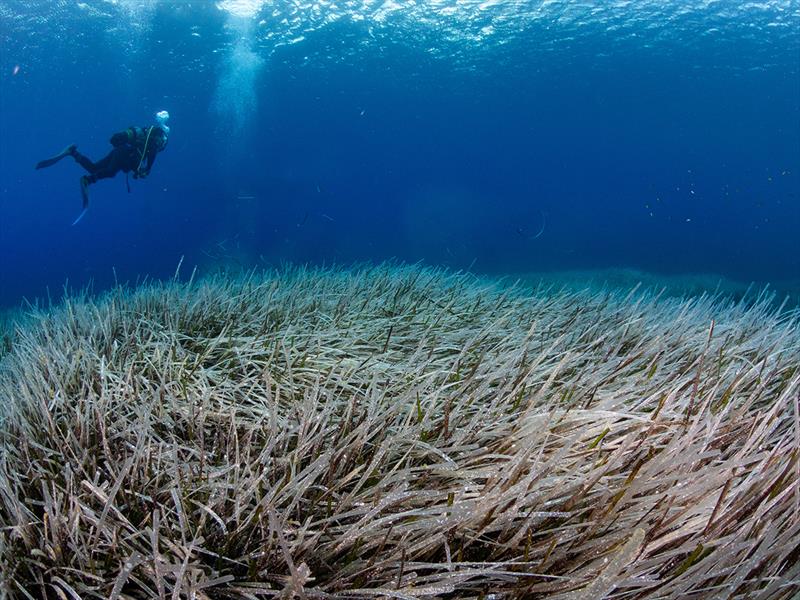
Seagrass an unexpected protector of marine history
by Ben Jones 4 Nov 2018 23:31 UTC

Seagrass © Julia Turner
Seagrass meadows are safeguarding shipwrecks off of the Australian coast, with Edith Cowan University (ECU) researchers likening them to security vaults for priceless cultural artefacts.
"Seagrass meadows established in our shores up to 6,000 years ago accumulating several meter-thick sediments underneath their canopies, and recent disturbances and losses have exposed shipwrecks and archaeological artefacts that were embedded and preserved within seagrass sediments," said Dr Oscar Serrano from ECU's School of Science.
"Seagrass meadows trap sediment and particles within their canopy gradually building up the seafloor over decades and centuries by depositing those materials as they grow."
"But once the protective cover of seagrass is gone, the ships begin to break down, which shows if you lose seagrass, you lose important cultural heritage."
The organic and chemical structure of seagrass sedimentary deposits is key to its ability to protect shipwrecks.
The seagrass structure is very resistant to decay, which leads to thick sedimentary deposits that seal oxygen from the sites, preventing decomposition of timbers and other materials.
"This is why we suggest seagrass meadows can be regarded as security vaults for underwater cultural heritage and time capsules of the human past," Dr Serrano said.
European and Australian ships discovered
While Europe is moving to protect ships exposed by loss of seagrass, two known shipwrecks off the Australian coast have received attention.
It's believed around 7,000 shipwrecks exist in Australian coastal waters, including around 1,650 in waters off WA.
Seagrass disturbance led to the unearthing of the James Matthews in 1973, sunk in Cockburn Sound (Western Australia), and the Sydney Cove, which ran aground off Preservation Island (Tasmania).
Artefacts and pieces of the James Matthews' hull have been recovered and conserved, while recovery of beer bottles from the Sydney Cove has led, remarkably, to 220-year-old brewing yeast being cultivated and used to create James Squire's The Wreck porter.
The research team also believe there's significant potential for the archaeological heritage of early Indigenous Australians buried and preserved in seagrass meadows.
However, seagrass meadows are increasingly coming under severe environmental stress due to climate change, weather events and human activity; and unless these effects can be stemmed, the frequency of exposures is likely to increase.
This has already placed European archaeologists and marine scientists in a race against the clock, as seagrass meadow losses in the Mediterranean have exposed Phoenician, Greek and Roman ships and cargo, many of which are thousands of years old.
Conserve or risk treasure hunters
Dr Serrano says his research team, which includes scientists and archaeologists from Denmark, Saudi Arabia, Greece and Australia, is looking to match shipwreck data with seagrass meadow maps.
They believe new acoustic techniques for sub-bottom imaging can allow exploration of underwater sites without disturbing the overlying seagrass meadows.
Where necessary, controlled archaeological excavation could then be undertaken to excavate, document and preserve sites and artefacts according to Dr Dorte Krause-Jensen from Aarhus University in Denmark.
"The danger of not putting programs into place is evidenced by treasure hunters off the Florida coast, who have adopted a destructive technique called 'mailboxing' to search for gold in Spanish galleons," Dr Krause-Jensen said.
"This involves punching holes into sediment to locate and then pillage wrecks, an action that damages seagrass meadows and archaeological remnants."
'Seagrass sedimentary deposits as security vaults and time capsules of the human past' by Dorte Krause-Jensen, Oscar Serrano, Eugenia Apostolaki, David Gregory and Carlos Duarte is published in Ambio.